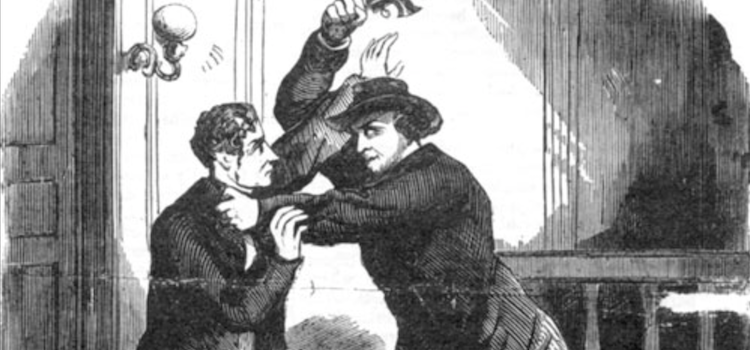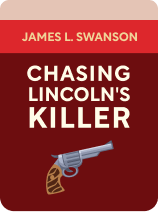

This article is an excerpt from the Shortform book guide to "Chasing Lincoln's Killer" by James L. Swanson. Shortform has the world's best summaries and analyses of books you should be reading.
Like this article? Sign up for a free trial here .
How did the plan to kill William Henry Seward tie in with the Lincoln assassination? What happened to Seward and his attacker?
In addition to killing Lincoln, John Wilkes Booth wanted to assassinate Vice President Andrew Johnson and Secretary of State William Henry Seward. He hoped that killing several key government officials would rally Confederate sympathizers and veterans to renew their fight.
Read more to learn what happened to Seward on the night that Lincoln was assassinated.
The Man Assigned to Kill William Henry Seward
Lewis Powell was a former Confederate soldier and loyal Booth follower. His job of assassinating William Henry Seward was expected to be fairly easy, as Seward was barely conscious and recuperating in bed after a serious carriage accident.
David Herold, a tracker and outdoorsman, was Booth’s most-loyal follower. His role in the assassination plot was to guide Powell to Secretary of State Seward’s home in D.C., and wait while Powell killed Seward (Powell didn’t know his way around the city). Then Herold was to accompany Powell out of the city to meet up with Booth south of Washington, in Maryland, after Lincoln’s assassination.
The Attack on Seward
As the attack on Lincoln unfolded at Ford’s Theatre, about a mile from the White House, William Henry Seward lay in bed with his daughter Fanny by his side. With David Herold waiting outside, Lewis Powell knocked on the door and told the servant who answered that he had medicine from Seward’s doctor, which he needed to give directly to the patient. He pushed past the doubtful servant and started upstairs, running into Seward’s son Frederick on the way.
They scuffled, and Powell tried to shoot him but his pistol malfunctioned. Powell beat Frederick with the gun as the servant ran for help. Fanny looked out of her father’s bedroom door, inadvertently revealing his location, and Powell barged into the room. An army nurse also in the bedroom fought Powell and Powell stabbed him. Powell managed to stab William Henry Seward in the side of the face while Fanny tried to protect him.
Outside, Herold could hear the commotion and took off on his horse, leaving Powell to fend for himself. Another Seward son, Augustus, awoke and joined the fray, and the defenders wrestled Powell out of the bedroom and into the hall. Powell finally fled, finding his horse outside but not Herold. He threw his knife on the ground and rode away. While Seward was seriously injured, he managed to whisper that he was alive, and the householders sent for doctors and police.
Secretary of War Edwin Stanton arrived and took charge of mobilizing troops to hunt for Booth and Powell. Stanton also sent guards to Vice President Johnson’s and every cabinet member’s house, believing this was a Confederate plot to bring down the government.
The Attacker Flees
After his botched attack on William Henry Seward, Powell became lost in the city without Herold as a guide. After sleeping in a tree for two nights, he remembered Mary Surratt’s Washington boarding house, which he’d visited with Booth, and decided to try and find it.
In Washington, Stanton’s investigators suspected that John Surratt was William Henry Seward’s attacker because of his association with Booth, although they had no evidence. As they questioned Mary Surratt at her boarding house, Powell rang the doorbell.
Powell’s Arrest
Powell was surprised to find soldiers inside and, when they asked his business, he said he was there to dig a ditch for Mary Surratt. However, she refused to confirm the story, saying she didn’t know him. Powell surrendered, and soldiers arrested him, Mary Surratt, and everyone else at the boarding house. Searching the house, investigators found photos and documents, including a photo of Booth hidden behind a picture frame, connecting the occupants to the Confederate cause.
Under questioning at headquarters, Mary Surratt admitted only the facts she knew the investigators likely had from other sources. She lied in saying she didn’t know Powell, but acknowledged knowing Atzerodt, whose name had been found in Booth’s room. She provided no clues to Booth’s whereabouts. Investigators arrested and jailed Surratt and Powell, along with several Booth associates who had nothing to do with the assassination. They even arrested the theater employee who’d unwittingly held Booth’s horse, among more than 100 suspects.
Trial and Execution
Despite the hundreds of people originally arrested, including many who had encountered or assisted the co-conspirators, Stanton decided to try only eight: Mary Surratt, Lewis Powell, David Herold, George Atzerodt, Samuel Arnold, Michael O’Laughlen, Edman Spangler, and Dr. Samuel Mudd.
Mary Surratt was believed to have played a central role in organizing the conspiracy, so she was sentenced to death, as were Lewis Powell, David Herold, and George Atzerodt. On July 7, the four were hanged at the same time on an extended scaffold. The man who tried to kill William Henry Seward was dead.

———End of Preview———
Like what you just read? Read the rest of the world's best book summary and analysis of James L. Swanson's "Chasing Lincoln's Killer" at Shortform .
Here's what you'll find in our full Chasing Lincoln's Killer summary :
- A vivid account of Abraham Lincoln’s assassination
- The 12-day pursuit of killer John Wilkes Booth and his co-conspirators through Washington, D.C., Maryland, and Virginia
- A story that is condensed to be suitable for readers of all ages






